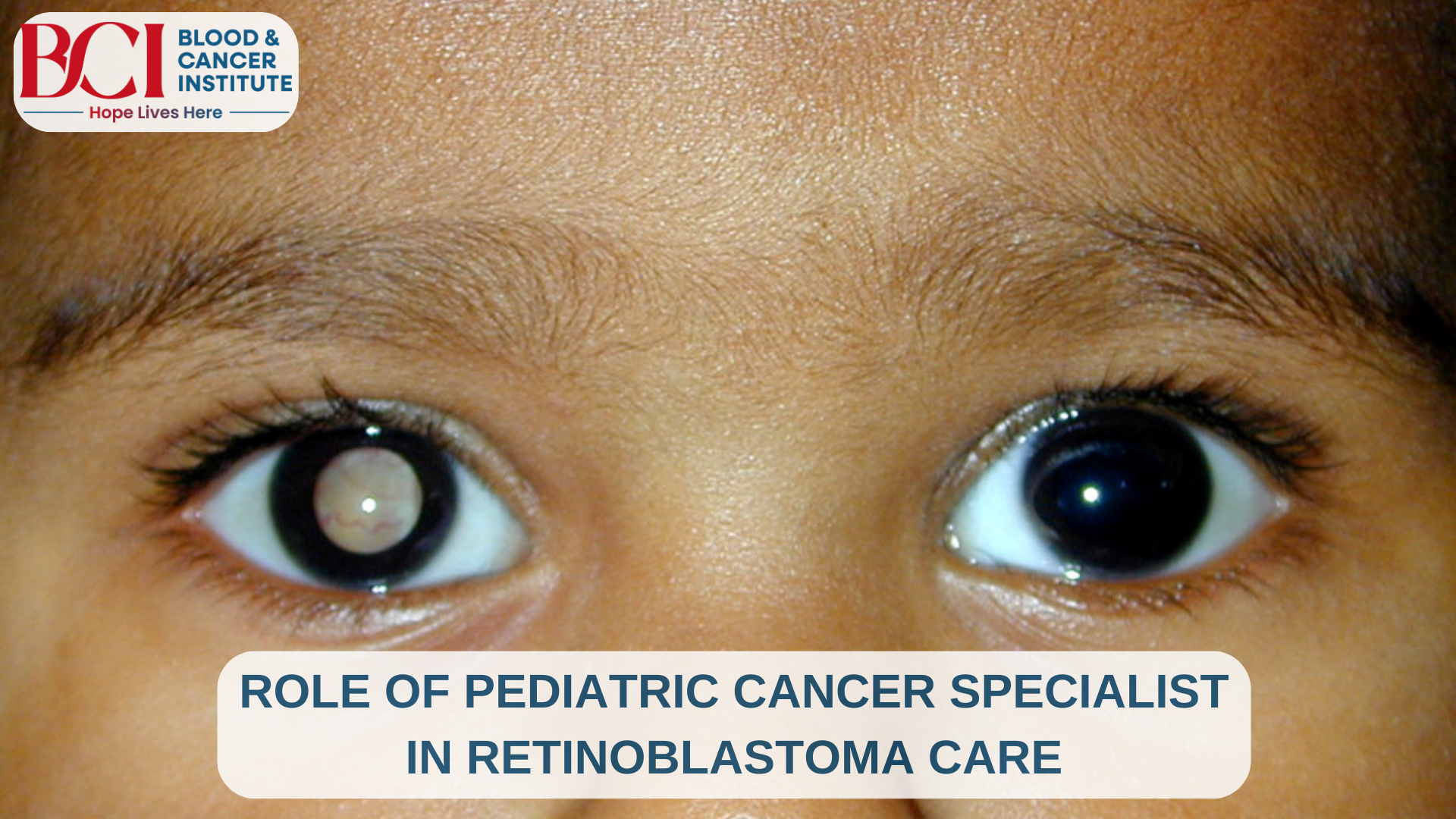
- By : BCI
- Blog
- Comments: 0
The Role of Pediatric Cancer Specialist in Retinoblastoma Care
Retinoblastoma, a rare eye cancer that typically affects young children, requires specialized care and a collaborative treatment approach to achieve the best possible outcomes. Pediatric oncologists play a central role in this multidisciplinary care team, bringing a deep understanding of childhood cancers and a commitment to helping young patients and their families through diagnosis, treatment, and recovery. Here’s an in-depth look at the vital role pediatric oncologists play in the care of children with retinoblastoma.
Understanding Retinoblastoma and the Pediatric Oncologist’s Role
Retinoblastoma originates in the retina, the light-sensitive tissue at the back of the eye, and primarily affects children under the age of five. It can develop in one or both eyes and may present as a visible white reflection in the eye, known as leukocoria. If left untreated, retinoblastoma can spread to other parts of the body, making early diagnosis and intervention crucial.
Pediatric oncologists are doctors specializing in the treatment of cancers in children, and their expertise is crucial in diagnosing and treating retinoblastoma. Pediatric cancer specialists in Surat take the baton — from determining the disease stage to devising the most effective treatment plan, these specialists guide families through complex medical decisions. Pediatric oncologists also coordinate with other healthcare providers, such as ophthalmologists, radiation oncologists, and genetic counselors, ensuring each child receives comprehensive, individualized care.
1. Early Diagnosis and Staging
The first step in retinoblastoma care is a thorough diagnostic evaluation. Pediatric cancer specialists in Surat work closely with ophthalmologists to confirm the diagnosis through eye exams, imaging tests like ultrasound, MRI, or CT scans, and genetic testing. These steps allow oncologists to understand the extent of the disease, whether it is confined to one eye (unilateral) or both eyes (bilateral) and if it has spread beyond the retina.
Staging the cancer is essential, as it guides the treatment plan. Pediatric oncologists determine if the retinoblastoma is intraocular (within the eye) or extraocular (spread beyond the eye), which greatly affects the choice of treatment options and the prognosis. Additionally, pediatric oncologists may work with genetic counselors to determine if the retinoblastoma is hereditary, as this can affect not only the treatment plan but also the risk of future cancers and implications for family members.
2. Developing and Implementing Treatment Plans
After diagnosis and staging, the pediatric oncologist develops a treatment plan tailored to the child’s unique case. Retinoblastoma treatment may include a combination of therapies:
● Chemotherapy: Pediatric oncologists often use chemotherapy to shrink tumors, making it possible to save the eye or use additional localized treatments. For retinoblastoma, they may use systemic chemotherapy (through the bloodstream) or intra-arterial chemotherapy (delivered directly to the eye’s blood vessels) to target the tumor more precisely.
● Focal Therapies: If the tumor is small and confined to the eye, the pediatric oncologist might recommend focal therapies such as laser therapy, cryotherapy (freezing), or thermotherapy (heat treatment). These are less invasive options aimed at destroying cancer cells while preserving vision.
● Radiation Therapy: External beam radiation or more targeted forms of radiation may be used in cases where chemotherapy or focal treatments are insufficient. Pediatric oncologists work with radiation oncologists to minimize exposure to surrounding tissues, as radiation in young children can lead to long-term complications.
● Surgical Intervention: In severe cases where vision cannot be preserved, enucleation (surgical removal of the eye) may be necessary to prevent the cancer from spreading. Pediatric oncologists help families make informed decisions about surgery and support them through the emotional impact of such a choice.
3. Monitoring and Support Through Treatment
Cancer treatment in Surat for retinoblastoma often requires multiple cycles, and pediatric oncologists monitor the child’s response to each stage. This close monitoring helps detect any recurrence or complications early, enabling timely adjustments to the treatment plan.
Pediatric oncologists also address the physical and emotional side effects of treatment, offering resources for pain management, emotional support, and vision rehabilitation if necessary. They provide invaluable support not only to the child but to the family, answering questions, addressing concerns, and connecting them with social workers, counselors, or support groups to help manage the stress of treatment.
4. Long-term Follow-up and Preventive Care
Once treatment concludes, pediatric oncologists remain involved in the long-term care of retinoblastoma survivors. Regular follow-up visits are crucial, as retinoblastoma patients, especially those with a hereditary form of the disease, may be at risk for secondary cancers later in life. Pediatric oncologists conduct routine eye exams and screenings to monitor for recurrence and help detect any new health issues early on.
In cases of hereditary retinoblastoma, the pediatric oncologist may work with genetic counselors to help families understand the genetic risks and take preventive steps for siblings or future children.
Final Thoughts
Pediatric oncologists are essential partners in retinoblastoma care, providing not only medical expertise but also compassionate support to families during one of the most challenging times in their lives. Their role extends from diagnosis to long-term follow-up, ensuring that each child receives the best possible care from the best cancer hospital in Surat, and their expertise enables young patients to achieve the highest possible quality of life. For families affected by retinoblastoma, the guidance and dedication of a skilled pediatric oncologist are invaluable, offering hope and a path forward through treatment and recovery.
